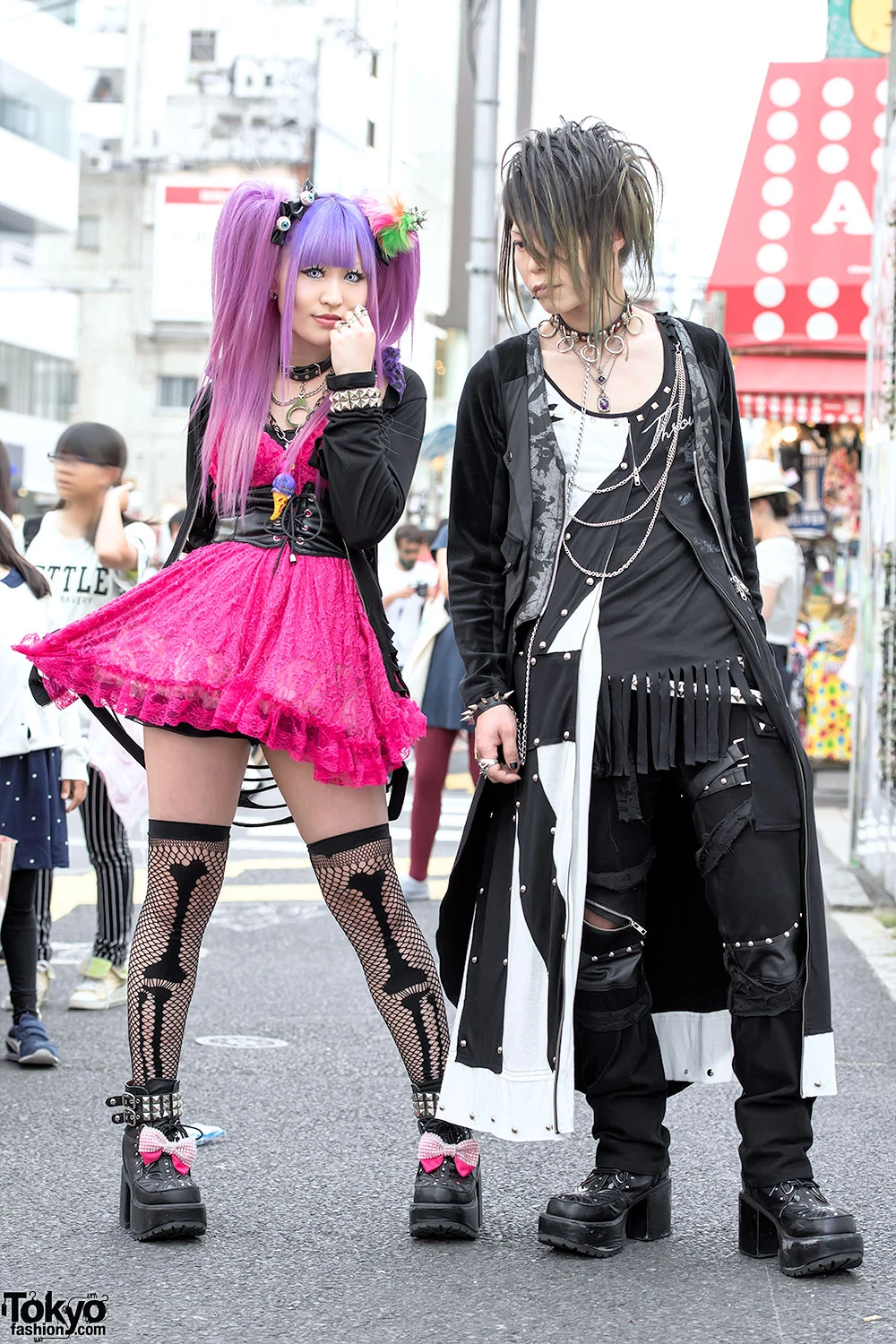Visual Kei is more than just a fashion style; it encapsulates a richly diverse subculture that merges music and fashion, originating in Japan during the 1980s. The term itself translates to “visual style” or “visual type,” and it is closely associated with a genre of music featuring flamboyant aesthetics, elaborate costumes, and often androgynous looks.
This movement encapsulates a variety of sub-styles, each representing different musical genres, moods, or artistic influences. The common thread is the commitment to a visually striking presentation, which serves as a form of self-expression.

Visual Kei fashion showcasing extravagant styles and hairstyles.
Source: Japanese Fashion Wikia
Origins of Visual Kei
The Visual Kei movement began with bands such as X Japan, who utilized extravagant costumes and theatrical performances to create an unforgettable presence. This aesthetic was heavily inspired by punk rock, glam rock, and even traditional Japanese clothing, creating a hybrid that is uniquely Japanese in its execution.
Over the years, the fashion has evolved, influenced by various musical movements and cultural shifts in Japan and globally. As a result, Visual Kei incorporates an eclectic mix of styles, allowing for endless creativity and variance.

A Visual Kei ensemble with studs and layers.
Source: DesperateHell
The Aesthetic Appeal
Visual Kei fashion often involves intricate hairstyles, dramatic makeup, and detailed outfits. Styles can range from the colorful and playful to darker, more gothic influences. Many fans express themselves through elaborate outfits that might include layering, accessories like spikes or studs, and bold patterns.
In Harajuku, known as the heart of youth fashion in Tokyo, one can find numerous individuals proudly wearing outfits that reflect Visual Kei influences. These unique styles often blend elements from other subcultures such as Lolita or punk, resulting in innovative and personalized aesthetics.

A gathering of people in Visual Kei fashion showcasing diverse styles.
Source: Japanese Harajuku Fashion
Key Characteristics of Visual Kei
- Gender Fluidity: Many Visual Kei artists and fans embrace androgynous looks, blurring traditional gender lines in fashion.
- Highly Stylized Hair: Hairstyles are often elaborate, frequently featuring bright colors, extreme shapes, and large volumes.
- Dramatic Make-Up: Makeup tends to be bold, with emphasis on eyes using eyeliners and color, creating an emotive appearance.
- Layered Clothing: Outfits often consist of numerous layers, combining different textures and materials to create unique silhouettes.
Substyles of Visual Kei
Within the broader Visual Kei umbrella, various substyles have emerged. Each offers its own unique take on the visual presentation. Some notable examples include:
- Oshare Kei: This style is characterized by bright colors, patterns, and a playful aesthetic.
- Angura Kei: A darker, more underground approach, often reflected through somber colors and more serious themes.
- Kote Kei: A mix of high-fashion elements and punk, featuring stylish garments with a rebellious edge.

Eroguro Kei – a substyle of Visual Kei blending elements of eroticism and grotesque themes.
Source: Korokai
Conclusion
Visual Kei is a fascinating blending of music and fashion that continues to evolve and inspire new generations. As an art form, it serves as an expression of individuality and creativity, allowing both artists and fans to explore different identities through bold and sometimes eccentric fashion choices. This unique cultural phenomenon highlights not only the vibrant scene of Japanese music but also the breathtaking diversity of fashion that continues to captivate audiences worldwide.